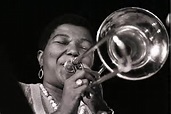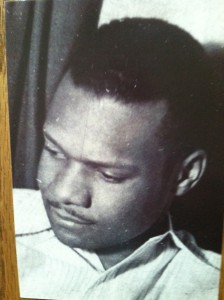Every calendar month, regardless of the year, decade or century, shepherds in its own joyous and heart-wrenching moments.
September is no exception.
This month regularly calls to children and adults of all ages to start or settle into a new school year. Its Labor Day marks the unofficial end to relaxed summer living and the beginning of more spirited fall days. And September is the month that four young African American girls senselessly lost their lives in a racially motivated 1963 Birmingham church bombing, while approximately 3,000 Americans of all races and backgrounds died in plane-fueled terrorist attacks on this month’s 11th day in 2001.

September 2016 will provide its own unique milestone. Years in the making, the Smithsonian Institution’s National Museum of African American History and Culture (NMAAHC) will open its doors on Washington DC’s National Mall this September 24th. This museum promises to illuminate the depth and breathe of the Black American experience in all its innovation, pain and progress.
NMAAHC Director Lonnie Bunch III says that the museum will tell “the quintessential American story.” While that story may be based in a specific culture, Bunch maintains that it is everyone’s story. In that declaration, Bunch echoes the sentiments of pioneering and award-winning African American writer/dramatist Richard Durham – born 99 years ago this September 6th.
Back in the late 1940s, Richard Durham believed that the Black American experience represented a microcosm of “the human condition of the main body of people in the world.” In Durham’s view, oppression combined with poverty, inadequate education and health care, adversely affected most of the world’s population. Therefore, he said, the story of Blacks in America would resonate with millions of people who “also want to uproot poverty and prejudice.”
Based on this philosophy, Durham created compelling radio and TV dramas, newspaper articles and other media products about African American heroes and heroines like Harriet Tubman, W.E.B. DuBois, Lena Horne and Muhammad Ali. The artifacts of many of such notable men and women will be featured in the NMAAHC.
So why not join me in celebrating Richard Durham’s 99th birthday and the highly anticipated birth of the Smithsonian’s newest museum by visiting Washington, DC’s National Mall this month? And to read more about Director Lonnie Bunch’s journey to make the NMAAHC a reality, click here.


 Thankfully, in 2016 Melba’s story is now accessible to a younger generation through the children’s book Little Melba and her Big Trombone by Katherine Russell-Brown, wonderfully illustrated by artist Frank Morrison.
Thankfully, in 2016 Melba’s story is now accessible to a younger generation through the children’s book Little Melba and her Big Trombone by Katherine Russell-Brown, wonderfully illustrated by artist Frank Morrison.

 The Rime of the Ancient Dodger was writer Richard Durham’s poetically whimsical take on Robinson’s story – an episode in his award-winning Destination Freedom radio series.
The Rime of the Ancient Dodger was writer Richard Durham’s poetically whimsical take on Robinson’s story – an episode in his award-winning Destination Freedom radio series.